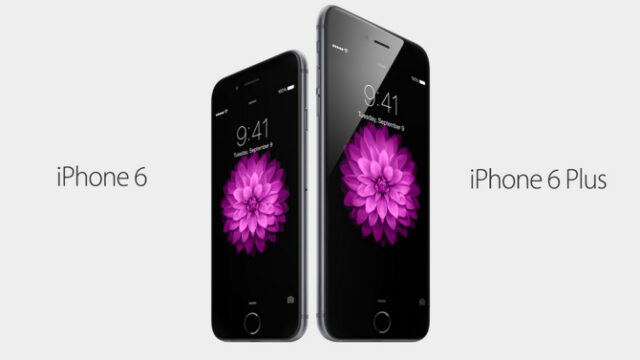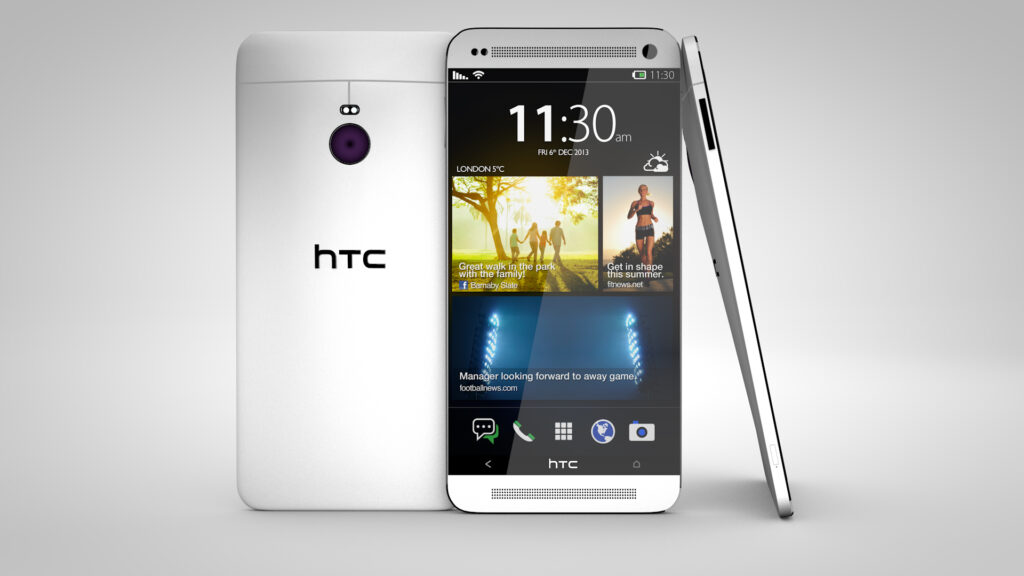
iPhone 6 vs Samsung Galaxy S5 vs Sony Xperia Z2 vs HTC M8
In this article we will write a detailed review of each phone model and compare their features.
Apple iPhone 6
Apple introduced the latest generation of iPhone, in two sizes. Smaller has standard name: iPhone 6, and the bigger one iPhone 6 Plus. The first comes with a 4.7-inch screen and the other with a 5.5-inch screen.
4.7-inch iPhone 6 has a screen resolution of 1334 x 750 pixels, while the iPhone 6 Plus 1920 x 1080, so it is full HD. It is commendable that Apple here pushes pixels as most manufacturers of Android, and it will definitely affect the autonomy. The screen comes with improved polarizer and the ionized layer which enhances the strength of the glass.
Both devices shape generally corresponding to those we’ve seen in spy photos. iPhone 6 is only 6.8 mm thin, the iPhone 6 Plus 7.1 mm. Remember, the thickness of the iPhone 5s amounted to 7.6 mm.
The Apple promise to scaling applications work flawlessly, and developers will be able to specifically adapt to the new larger screens.
When specifications are concerned, the iPhone 6 and iPhone 6 Plus are powered by the new Apple A8 64-bit SoC-TV made in 20 nm technology. This chip has two billion transistors and 13% less than the A7 version. According to Apple’s people, this chip is 20% faster and delivers 50% better graphics performance. Apple promises here and “sustainable performance”, which means that the device can operate at full power without a significant warming. New graphics to developers should enable the development of even better and more demanding games. Note that the amount of RAM and the other at 1 GB, iOS in apparently enough for flawless execution of all tasks.
The new M8 “motion” chip now measures the relative height, and contains a barometer that measures the moisture in the air. As a software support this chip comes with the Nike + application.
Apple promises enhanced autonomy so the iPhone 6 should withstand 10 hours of surfing, and the iPhone 6 Plus for 12 hours, while the video playback on the latter had to climb up to 14 hours.
The new iPhone, with the classical LTE with data transfer rates up to 150 Mbps, brings the new VoLTE technology that allows voice calls over the LTE network, but it should be on mind that this technology is not supported by all operators and for its use of the existing network must be upgraded. In fact, when your current device is connected to LTE (4G), it is simultaneously connected to the 2G / 3G network that calls come, and that further drains the battery. The VoLTE is expected in the future, this will further reduce energy devices while working on 4G networks.
iPhone 6 and iPhone 6 Plus comes with the new camera. Resolution remained at 8 MP, a true-tone flash f / 2.2 aperture, and the pixel size (cell) has grown to 1.5 microns. So, despite the same resolution, the sensor is increased, or its cells can now receive more light (Apple promises up to 81%), and that automatically means higher picture quality.
Now, what is interesting and what in some way differentiated these two devices is image stabilization. iPhone 6 features a digital, ie. software, while the iPhone 6 Plus has a built-in Optical Image Stabilization (OIS).
When it comes to video, the camera records in 1080p resolution at 30 or 60 fps, as well as slow-motion shots with 120 or 240 fps.
Among other details, there is also a new messaging app, which now allows you to record and send voice messages and improved Health applications, as well as the notification system.
iPhone 6 and iPhone 6 Plus contain NFH chip for Apple’s new payment system that will work in combination with TouchID system.
Samsung Galaxy S5
The fifth generation of Samsung’s manufacturer has arrived. For the first generation Galaxy S, which we reviewed before approx. four years ago, Samsung has surpassed the then most popular manufacturers of Android devices – HTC. This was followed by the annual rotation of new models and each new generation was even more successful. Samsung Galaxy S5 is here and is a logical step forward in the development of smartphones, but Samsung as a company in general.
What Samsung’s top models always rises above the competition is a kind of completeness. In fact, Samsung’s smartphones have removable battery and a memory card slot, which some may not be necessary, but there are a large number of customers which find that crucial.
Samsung Galaxy S5 brings significantly better hardware as was the case in the transition from S2 to S3 or S3 to S4, but they come in a waterproof case, following the trend imposed by Sony. It is similar with a fingerprint reader, which popularized Apple, but still works about different technologies. Novelty represent hart ratio meter and ISOCELL camera that promises better pictures in low light as well as the recording of 4K video.
Benefits – Superior hardware and system performance, screen without blemish, resistance to water and dust, high quality camera and battery above average.
Disadvantages – No optical image stabilization.
When this device directly compare to its predecessor, Galaxy S4, you will notice that S5 is apparent higher, a little wider, and thicker. Although we did not expect this kind of development in the design, dimensions increase is partly justified the introduction of resistance to water and dust. This concept of housing requires some modifications, is commendable that in spite of everything, the battery remained interchangeable. In fact, this is one of the objective benefits of Samsung models from the competition because there are a good number of users, world travelers who carry a spare battery in order to reduce dependence on power supplies.
At the back underneath the camera, there is a hart ratio meter, and on top of the unit infrared port. Sensors, like the previous models, are contained on the front of the handset to the front of the camera.
When the water resistance is concerned, the Samsung Galaxy S5 comes with IP67 certification, which means that the device leads should withstand up to 30 minutes at a depth of one meter. MicroUSB slot is protected by a cover, and a 3.5 mm audio jack provides protection within itself.
Screens of smartphones in recent years grew like mushrooms after the rain, but as it seems, is now somehow reached the pinnacle. It is now obvious that the diagonal of 5.1 or 5.2 inches for smartphones in the classical sense becomes the ceiling, all over this already goes into the category phablet, depending on the overall size. So the Samsung Galaxy S5 comes with a Super AMOLED screen diagonal of 5.1 inches and now the usual resolution of 1920 x 1080 pixels, which gives a density of about 432 ppi.
Display and color saturation can be adjusted, yu have a choice of five display modes: standard, professional photography, dynamic, cinema and adaptation. This latter method automatically adjusts the color range, saturation and sharpness of the screen for different applications: Gallery, Camera, Internet, Video, Smart Remote and Books.
Scan fingerprint is definitely trendy. After similar technology on their devices began to apply Motorola, Apple and HTC, and Samsung now fits their version. It is a sensor built into the normal home button, which means that its size is not changed. The system works by swiping the finger across the sensor, and is possible to save a total of three different prints. The system in practice works quite well and reliably, and reading errors occur in less than 10% of cases. The fingerprint reader is primarily used to unlock the device, like the iPhone, but Samsung has meanwhile hereby allow the execution of PayPal transactions.
It’s been about two years since they represented the first Android smartphones driven by quad-core processors, and eventually grew their strength, providing better and better performance. Last year’s Snapdragon 800 has so far proved to be the biggest leap in the development of quad-core SoC’s and we could see it on many devices that are on the market began to arrive in the second half of the year. Snapdragon 801 is also found a place in the Samsung Galaxy S5, as well as its rivals (Sony Xperia Z 2, HTC One M8, Oppo Find 7 etc..).
A few months before the official announcement, the Internet has been rumored that the S5 have 3 GB of RAM, as well as Note 3, but this did not happen. You will agree that a 2 GB RAM is enough for all actions on smartphones, although the most demanding users mostly would turn to Sony, because their Xperia Z2 is equipped with 3 GB of RAM. How long will this get, it is questionable, but if the price is about the same device, 3 GB again somehow sounds better.
Internal memory is 16 GB, of which the end user is available for a little less than 10 GB.
As for connectivity to other devices is concerned, the Samsung Galaxy S5 is equipped with literally everything. The device works on 2G, 3G and 4G networks, with a top speed of up to 150 Mbps dowlnoad (LTE). Of course, this is a theoretical speed, but in practice it rotates between 20 and 40 Mbps, depending on the location and micro-location.
There’s the usual WiFi and everything else he provides (WiFi Dirtect, Wi-Fi hotspot and DLNA). Let us also mention the A-GPS, Bluetooth, IR and NFC.
A new feature that was announced at the launch of the device is called Downlaod booster. So when this booster is turned on, all files larger than 30MB which uses WiFi and LTE networks are downloaded faster. The idea itself is great, but it would be even better if the same thing is enabled at the 3G network, not just on 4G.
The volume of the headphones and external speakers are at a high level, but unfortunately, no stereo effect.
The camera is the part that grows every year for a few extra megapixels. So now we have 16 MP sensor in combination with the so-called. ISOCELL technology that helps to focus images and the improvement of quality in low-light conditions.
“Selective Focus” takes two images at once, with different focal points, which allows for subsequent determination of focused detail.
The camera captures images in 16: 9 resolution, which means that the entire surface of the sensor used, unlike the previous model which is the highest resolution was losing more than 3 megapixels due to the adjustment ratio (4: 3). ISOCELL technology is based on adding a kind of barriers between the sensor cells, allowing them ultimately to receive a larger amount of light, and affects the greater sharpness and color fidelity. This technology allows for setting the lens closer to the sensor, which has a direct impact on reducing the overall dimensions of the module.
We should not forget the video. The camera captures video at 2160p resolution at a frequency of 30 fps, 1080p at up to 60 fps and 720p at 120 fps for high-quality slow-motion shots. These options are already introduced in Note 3 and do not represent any particular novelty, and if you’re really shooting 2160p video (UHD), the question is what will it look, because the availability of TV screens with UHD is still limited. Also, the video is recorded in MP4 format and bitrate in 2160p resolution is 48-50 Mbps, which means that one minute of this video take, for today’s crazy notions, 360 to 400 MB.
During shooting touch can change the focus point, and return to the continuous autofocus. The amount of detail is at the highest level, sharpness too, with very little noise. For now we can say that we have some of the finest video camera on the market, at least until we see what offers Sony Xperia Z2. Either way, if camera is priority to you when buying smartphones, with Samsung Galaxy S5 you can’t mistake.
The Samsung Galaxy S5 comes with improved energy savings called “Ultra power saving mode.” If this option turned on, it will turn into a simple launcher black and white theme, turn the backlighting of and provide more energy supplies for the most basic tasks. As a result, the battery with only 10% capacity can stand all day.
The fifth generation of Samsung Galaxy S brings many enhancements and news to its predecessor, but we have seen that this is not a revolutionary change, nor the sudden leap in development. Galaxy S5 is in any case a logical step forward, if you decide to purchase this device, you can be sure that you have one of the best on the market, and perhaps even the best.
Sony Xperia Z2
Just like its predecessor, the Z2 is almost entirely made of glass and metal. Glass surfaces are of course in front that covers the screen of the device and the back where there is a special glass against scratching. The main base of mobile phone makes the metal frame, which contains all the necessary buttons and openings for the speakers. This metal frame with its color and design reminds of Apple’s iPhone, which similarly has resolved metal rim.
Like its predecessor, Z2 has an IP 58 certification, which indicates that the device is resistant to water and dust.
The screen is 5.2 inch with a resolution of 1920 x 1080 pixels. It was made in the IPS technology which are guaranteed the aforementioned large viewing angles, and Sony has incorporated its Triluminos technology. This technology using the filters allows truer and better color and improved contrast. Besides Triluminos, screen Z2 can boast of X-Reality technology to improve the video content which increases the sharpness, contrast and vivid colors added.
The final result? Screen Xperia Z2 is truly a pleasure to watch. Pixel is impossible to discern with the naked eye, and because of new technologies in terms of Z1 screen can be viewed from wider angles with much better contrast and color reproduction.
We have found fault in a minimum illumination of the screen that is too large for comfortable night reading.
As in the rest of competing devices, the processor embedded in Z2 is the last Snapdragon 801 The relevant to Samsung S5 which has a 801-AC MSM8974 processor, in the Z2 is mounted slightly slower version of the chipset – 801 MSM8974-AB knocking at 2.3GHz. In addition to the main quad Krait processor on Z2 there is an additional charge for graphics coprocessor operations – Adreno 330th
The device was installed 16 GB of memory on which you can store content. Since Z 2 are able to record 4K video, this is certainly not enough. But luckily in the Z2 is possible to insert a micro SD card which can expand the memory up to an additional 128 MB.
As far as performance, they are as expected – excellent. LTE to 150 Mbps, 3G, WiFi, Bluetooth 4.0 with Low Energy profile, DLNA, MHL and NFC are all supported.
Regardless of the Z2 very slim device, Sony has managed to locate him in the immutable battery capacity of 3200 mAh. Precisely because the battery is only a few millimeters thin, it needs to be long and thus we come to the main reason why the above and below the screen there is more than 1 cm “unused” space. What is most important is that users will be satisfied with the Z2 battery. According to official specifications Z2 can withstand up to 19 hours of 3G talk, or slightly more than 30 days in the standby mode. Interestingly, the device can play music for 120 hours, or video for 10 hours. These specifications appear to be excellent, and we can confirm that in practice, these figures do not differ significantly.
Like its predecessor, the Sony Z2 can boast with 20.7-megapixel camera that has a G lens. What should first highlight is definitely the size of the sensor, which is the ½.3 “which is greater than the rest of the competition. Apple’s iPhone and HTC’s M8 has a sensor size of 01.03 “Galaxy S5 ½.6.” For this reason Xperia Z 2 has a pixel size of 1.1 micro meters. It should be noted that the Z2 has a wide-angle lens of 27 mm, which will fit on a wide scene photos.
Sony Xperia Z2 is certainly a better device than Z1 – enjoys the latest hardware, much better screen and slightly improved camera.
HTC M8
In the dimensions, M8 is slightly larger than its predecessors. But it is not surprising if we consider that the M8 has a five inch diagonal screen. The case is still made of metal, but this time the percentage of coverage of metals increased and now that number instead of 70% is 90%. There is also a weight rise to 160 grams.
HTC One M8 comes with hardware that is in almost every aspect of a major improvement over its predecessor. So for all operations is responsible Snapdragon 801 processor with four cores at 2.3 GHz knocking. For graphics operations is available the Adreno 330 GPU.
The amount of DDR3 RAM M8 is 2 GB with the possibility of accommodating 16 or 32 GB of data on internal memory, depending on the device. Keep in mind that about 6 GB of internal memory is occupied with the OS or partitions that are used for some future software updates, which means that without memory card is available for use about 10 GB 16 GB model and 26 GB 32 GB model.
The battery is unfortunately irreversible, and her capacity 2600 mAh, which is about 300 mAh larger than its predecessor.
HTC One connectivity no lack of 3G and LTE, Bluetooth version 4.0, Wi-Fi with a / b / g / n / ac standard, USB 2.0, GPS / GNSS, MHL, DLNA and NFC connectivity.
Diagonal screen size is 5 “. Resolution has remained the same (1080p) with reduced density of pixels per inch, which is the 441.
Unlike Samsung’s AMOLED matrix, HTC chooses IPS which is characterized by better color reproduction compared to AMOLED.
In addition to higher fidelity color rendering, HTC’s screen can be proud of an extremely large angles of visibility, and excellent readability in direct sunlight.
Speakers on M8 are incredibly loud with the ability to reproduce remarkable sound quality with balanced ratio of bass and treble frequencies. When the volume is turned up to maximum, the sound is as clean as at lower volume levels.
The situation can be further improved by connection of headphones and selecting BoomSound options.
The disadvantage is that within the HTC apps to play music there is no ability to manage the equalizer, so for the additional sound settings it will be necessary to download some of the alternative players. Since the HTC M8 is advertised as superior audio device is not clear to us why HTC did not allow at least basic management options for sound quality which would certainly further enhance the already excellent impression of this aspect of the device.
HTC One M8 comes with Android 4.4.2. with HTC’s Sense supplement that has advanced to the sixth version. The new Sense is HTC’s smallest modification of an operating system so far and follows a design note that HTC launched two years ago. It’s definitely a big change, if we remember previous versions of Sense, and its beginnings as TouchFLO interface on Windows Mobile. At that time, the entire interface changes eas absolutely necessary thing, because as former WM Android early versions were less graphically appealing. Today Android is already completely different story, because in his AOSP version is enough graphically reworked, and even some major cosmetic finishing of cell phone manufacturers are not necessary.
In the One M8 is installed immutable battery capacity of 2600 mAh. M8 will easily get through the day with advanced use, and a day and a half or even two of moderate use – which are certainly good results for smartphone with the latest hardware and not so small screen high resolution.
The credit for this probably has a slightly larger battery, but it is certainly the main reason that newer and more fuel efficient chipset and several HTC’s software and hardware tricks. Some of these include efficient subprocesses that deal with image processing, and come with the new Snapdragon SoC and a streamlined software OS so HTC promise that M8 battery will last up to 40% more than those M7.
In the case of extreme necessity of energy conservation, as HTC and Samsung, and Sony contains a system of energy conservation called “Extreme power saving mode.” This mode disables the use of all applications except the primary – phone, messaging and calendar, so in this mode, a standby time of 10 hours use about 5% of the battery.
If you remember in 2011, HTC has released its model EVO 3D, and the similarities between this model and One’s M8 is that both are counted by two rear-mounted camera. However, the EVO 3D is another use for not very useful 3D effect, while the M8 One second camera is used to measure distances in filmed scene, in order to subsequently photos could refocus.
The main camera is the same as on M7 – 4 megapixel UltraPixel, but this time without optical stabilization. A second camera has maximum resolution of 2.1 megapixels. The main sensor size is 1.3 “and the pixel size of 2 microns with a maximum aperture F / 2.0.
We can safely say that with the design or build quality, the camera certainly should be the main selling point of this device. HTC One M8 is definitely the best phone that HTC has made in its history. It features top-notch production that will surely allow an easier transition to many iOS users who want to try Android OS.
[schema type=”product” url=”https://rumorfix.org/infographic-s5-vs-iphone-6-vs-z2-vs-m8/” name=”iPhone 6 vs Samsung Galaxy S5 vs Sony Xperia Z2 vs HTC M8″ description=”Smartphone battle – Infographic (Samsung S5 vs iPhone 6 vs Sony Xperia Z2 vs M8)” Top listings”” brand=”Techinfographics” manfu=”Kristina Vodopivec (https://twitter.com/leeloo_58)” model=”Smartphone battle – Infographic (Samsung S5 vs iPhone 6 vs Sony Xperia Z2 vs M8)”]
Conclusion
At the present time is indeed very difficult to compare all the leading models of cell phones and say that is absolutely better. All are characterized by excellent hardware, so a direct comparison with other should say that Sony just like the HTC M8 features top quality production and unified design that brings a touch of luxury. Xperia Z 2 and Galaxy S5 are better compared to the M8 in terms of IP 58 certification, and offer the possibility of immersing the phone in water. Samsung Galaxy S5 is even better than both in terms of battery life, it offers the possibility of replacing the same which is not only important in case you find leaking batteries during the day and do not have a charger, but also because with months of use reduces battery capacity and replacement after some time certainly comes in handy. About iPhone 6 there is not much to say, there’s no many new features to mention, it’s on the second place by battery – after Z2, lags behind with processor, also can’t be proud of screen resolution among others. We try to be objective, but it is obvious that the iPhone loses this battle in every aspect.
Xperia Z2 in terms of autonomy certainly lead in this battle, because of the three tested devices emphasizes a longer battery life.
Samsung however unlike the trio suffers from the mantra of poor design or weak plastic. Galaxy S5 can boast with improved camera compared to two competitors iPhone and M8, while Z2 camera again wins.
Finally, the selection of cell phones will be reduced to personal preferences about the design and possible selection of materials – plastic, glass or metal. The rest is “out there” and whichever you choose from multiple classes of mobile phone – you will not go wrong.
















